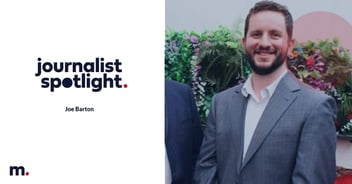Interview with Kaitlyn Offer, Chief of Staff, AAP Melbourne
Kaitlyn has been a journalist since 2007, working across regional, suburban and state publications in WA before moving to Victoria in 2015. In her three years at The Sunday Times/PerthNow in WA, Kaitlyn covered courts, crime and disasters. Since joining AAP Melbourne in 2016, she has covered general news, state politics including the 2018 election, and was appointed chief of staff in July 2019. She tweets at @KaitlynOffer.
When did you first decide to be a writer and why?
Back in Year 10 when we all got told we had to decide what we wanted to do for the rest of our lives, I just knew that I loved asking questions and was a bit obsessed with music magazines – I figured journalism would combine the two. My family has always watched and paid attention to the news, but it wasn’t until I started studying journalism at university that I appreciated how much I loved all news and journalism, not just a specific field. I’ve been fortunate in my career that I have been able to try my hand at all of it – entertainment, crime, and politics. It has been a blast.
Take the time to learn your craft. Move far away from home and your comfort zone and revel in regional journalism. It teaches you so much about not just writing, but handling and building contacts because you are in such close proximity to them. One of my first editors always told us “every story is a front page for someone” and it is so true, especially in smaller communities. You learn lessons on how to be fair and accurate – because you will hear all about it if you are not.
What does a typical day look like for you?
My day starts with the alarm going off at 5am and reading the newspapers. I’m in the office by 7am and turn on ABC News channel and the commercial networks and tune into 3AW. I then get a move on with stories from overnight that need covering and start assigning stories to journalists. The day is usually then a moving feast of monitoring the news, sub-editing stories and assigning reporters. Thankfully, an early start means an early finish and I leave about 2.30pm/3pm. I then try to watch all the news bulletins from 5pm to 7.30pm.
What story has been your favourite to work on so far this year?
I wouldn’t necessarily describe it as a favourite, but I am extremely proud of the bureau’s coverage of the bushfires. They started at a time when we were low on staff because it was peak holiday time, but our small team threw themselves at coverage on the ground and from the office.
In your opinion, what makes a good press release?
Getting to the point! This includes telling the story in the subject line. We get a flood of press releases every day and need to be able to identify if it has broad appeal and impact quickly. Dot points can also be handy in helping us do that.




